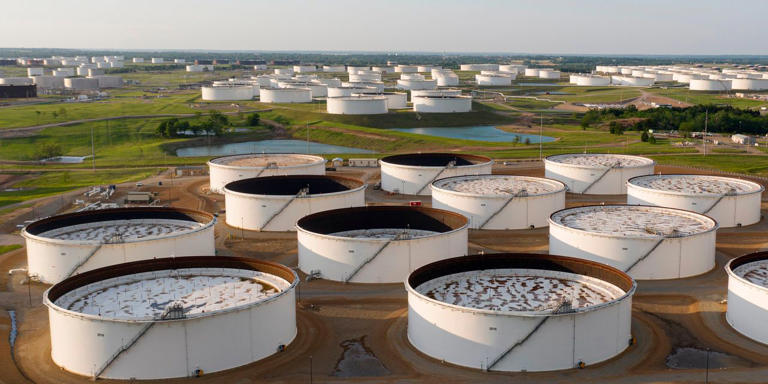Oil futures climbed on Wednesday following news that Saudi Arabia increased prices for crude sold in Asia, its primary market. This initial boost was further supported by official data indicating that U.S. crude inventories rose less than anticipated the previous week.
Additionally, Federal Reserve Chair Jerome Powell’s comments, reaffirming the likelihood of rate cuts later in the year, contributed to a positive sentiment among investors, according to analysts.
Price moves
- West Texas Intermediate crude for April delivery rose by 98 cents, or 1.3%, to close at $79.13 a barrel on the New York Mercantile Exchange.
- May Brent crude, the global benchmark, increased by 92 cents, or 1.1%, settling at $82.96 a barrel on ICE Futures Europe.
- April gasoline on Nymex ended with a gain of 0.8% at $2.554 a gallon.
- April heating oil finished with a gain of 2.2% at $2.663 a gallon.
- April natural gas dropped by 1.4% to $1.929 per million British thermal units.
Market drivers
The Energy Information Administration reported that U.S. crude inventories rose by 1.4 million barrels in the week ended March 1. Gasoline inventories experienced a significant drop of 4.5 million barrels, while stocks of distillates fell by 4.1 million barrels.
Analysts surveyed by S&P Global Commodity Insights had expected crude inventories to show a rise of 3.7 million barrels, with gasoline stocks anticipated to drop by 2.3 million barrels and distillates forecasted to fall by 800,000 barrels. The American Petroleum Institute, an industry group, had earlier reported a smaller increase in U.S. crude inventories of around 400,000 barrels last week.
The notable decline in refined-product inventories played a role in boosting prices. Additionally, the refinery-utilization rate jumped by 3.4% to 84.9% of capacity, indicating that the low point of turnaround season is over, and refiners are gearing up for the summer driving season, as noted by Robert Yawger, executive director of energy futures at Mizuho Securities.
Saudi Arabian Oil Co. (Aramco) announced an increase in the official selling price of its flagship Arab Light crude for Asia by 20 cents a barrel to $1.70 a barrel over the benchmark price for April. This adjustment exceeded the market’s average expectations, contributing to market sentiment.
“Despite climbing oil inventories over the past few weeks, oil prices have been displaying stronger-than-expected strength,” Peter Cardillo, chief market economist at Spartan Capital, said in a note.
“The reasons are likely attributed to OPEC+ extension of oil cuts and improving near-term technical strength. On the other hand, a potential cease-fire between Israel and Hamas could diminish the war premium, restraining prices from moving much beyond the $80 level,” he wrote.
OPEC+ on Sunday extended voluntary production cuts of 2.2 million barrels a day into the second quarter, as expected.
Fed Chair Powell, meanwhile, “said nothing to spook investors” during his testimony before a House committee Wednesday, said Mizuho’s Yawger. Powell said a “soft landing” for the economy was possible and that rate cuts later this year would likely be appropriate.
